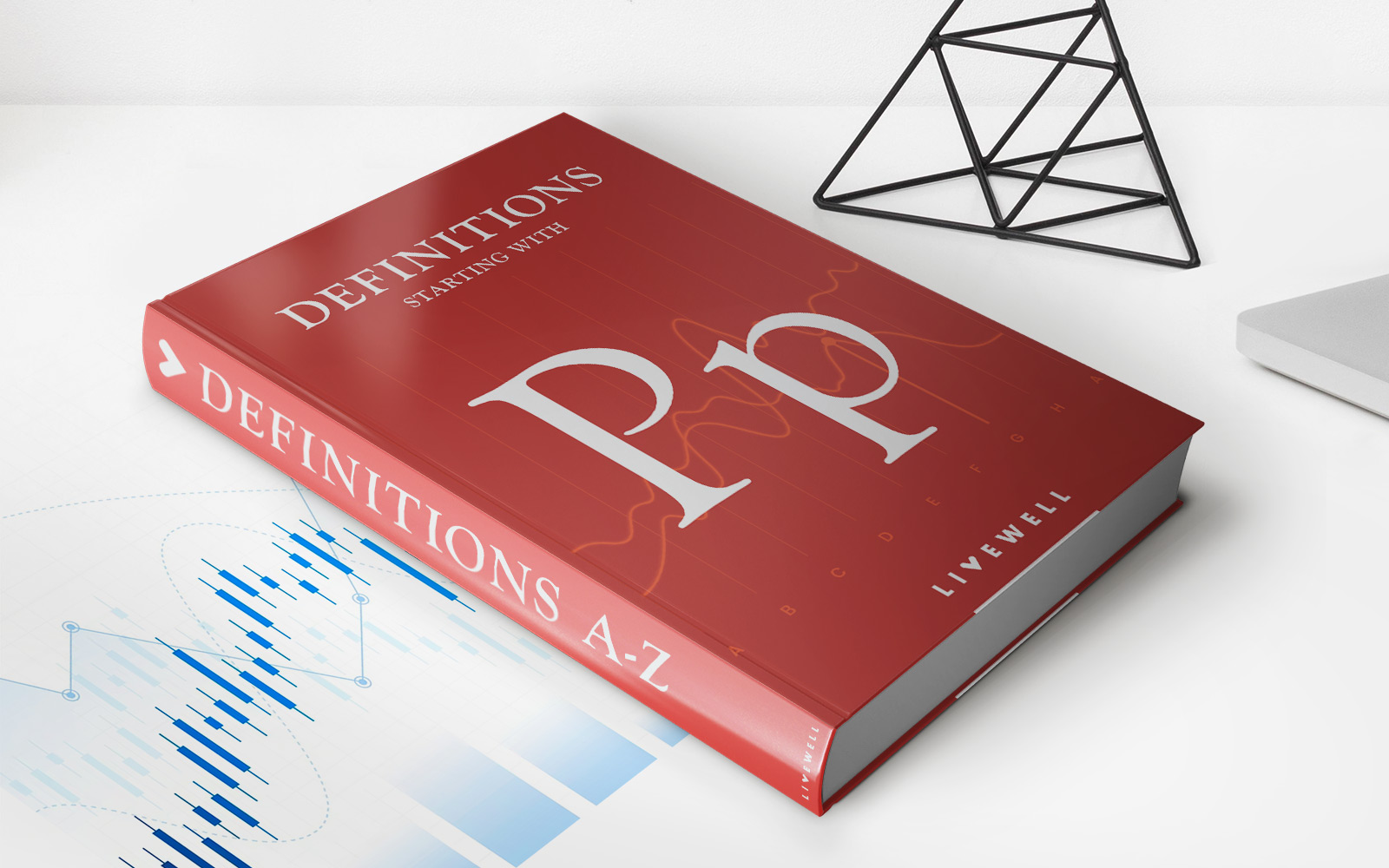Home>Finance>How Important Is Goodwill In Mergers And Acquisitions


Finance
How Important Is Goodwill In Mergers And Acquisitions
Published: February 24, 2024
Goodwill plays a crucial role in finance, especially in mergers and acquisitions. Understanding its significance is essential for successful financial transactions.
(Many of the links in this article redirect to a specific reviewed product. Your purchase of these products through affiliate links helps to generate commission for LiveWell, at no extra cost. Learn more)
Table of Contents
Introduction
Mergers and acquisitions (M&A) are pivotal strategic moves for companies aiming to expand their market presence, diversify their offerings, or gain a competitive edge. Amidst the complex web of financial considerations in M&A, the concept of goodwill holds significant importance. Goodwill represents the intangible value attributed to a company when it is acquired at a price higher than the sum of its identifiable assets. This intangible value encompasses factors such as brand reputation, customer loyalty, and strategic positioning, which are not quantifiable on a balance sheet but hold substantial significance for the acquiring company.
Understanding the role of goodwill in mergers and acquisitions is crucial for investors, financial analysts, and business leaders alike. It sheds light on the intricacies of financial reporting, the impact on the financial statements of the combined entity, and the factors influencing the calculation of goodwill. Moreover, evaluating goodwill in M&A transactions is essential for making informed investment decisions and comprehending the true worth of the acquired entity.
In this comprehensive guide, we will delve into the significance of goodwill in mergers and acquisitions, its role in financial reporting, the impact on M&A transactions, the factors influencing goodwill, and the methods for evaluating goodwill. By gaining a deeper understanding of goodwill in the context of M&A, readers will be equipped with the knowledge to navigate the complexities of valuation and financial analysis in the dynamic landscape of corporate mergers and acquisitions.
Understanding Goodwill in Mergers and Acquisitions
Goodwill in mergers and acquisitions represents the premium paid by an acquiring company over the fair market value of the net assets of the acquired company. It embodies the intangible elements that contribute to the value of the acquired business, including its reputation, customer relationships, intellectual property, and overall brand strength. While tangible assets such as buildings, equipment, and inventory are relatively easy to quantify, goodwill encapsulates the non-physical attributes that contribute to the long-term success and profitability of the acquired entity.
When a company is acquired, the purchase price is allocated to its identifiable assets, such as tangible property and identifiable intangible assets like patents or trademarks. Any amount remaining after this allocation is attributed to goodwill. Essentially, goodwill reflects the value of the acquired business as a ongoing concern, representing the synergies and potential for future growth that the acquiring company believes the acquisition will bring.
From a financial perspective, goodwill is recorded on the balance sheet as an intangible asset. It is subject to periodic impairment testing, whereby its carrying value is compared to its implied fair value. If the carrying value exceeds the implied fair value, an impairment loss is recognized, impacting the company’s financial performance. Understanding the nature of goodwill in M&A transactions is essential for stakeholders to grasp the intangible assets’ substantial impact on the financial health and strategic positioning of the combined entity.
The Role of Goodwill in Financial Reporting
Goodwill plays a pivotal role in financial reporting, as it represents a significant component of the total assets of an acquired company. When a merger or acquisition occurs, the acquiring company must recognize and quantify the acquired assets and liabilities, including goodwill. This process involves a careful assessment of the fair values of the acquired assets and liabilities, with any residual amount attributed to goodwill. The accurate determination of goodwill is essential for presenting a true and fair view of the combined entity’s financial position.
From a financial reporting perspective, goodwill is subject to periodic impairment testing to ensure its carrying value does not exceed its fair value. Impairment testing involves comparing the fair value of the reporting unit, typically a business segment, with its carrying amount, including goodwill. If the fair value is lower than the carrying amount, an impairment loss is recognized, reducing the goodwill value on the balance sheet. This impairment testing is crucial for maintaining the accuracy of the financial statements and reflecting any changes in the acquired business’s value over time.
Moreover, goodwill is disclosed in the notes to the financial statements, providing transparency regarding the allocation of the purchase price and the factors contributing to the intangible value of the acquisition. This disclosure enables investors, analysts, and other stakeholders to comprehend the rationale behind the acquisition and the strategic importance of the intangible assets embedded in the goodwill amount. It also offers insights into the potential risks associated with impairment and the impact on the company’s financial performance.
By understanding the role of goodwill in financial reporting, stakeholders can gauge the long-term implications of M&A transactions on the acquirer’s financial health and performance. The accurate representation of goodwill in the financial statements is essential for fostering transparency, facilitating informed decision-making, and upholding the integrity of financial reporting practices.
The Impact of Goodwill on Mergers and Acquisitions
Goodwill exerts a profound impact on mergers and acquisitions, influencing the financial performance, strategic positioning, and stakeholder perceptions of the combined entity. When an acquiring company pays a premium for an acquired business, the amount of goodwill recorded represents the expectation of future economic benefits arising from the synergies and intangible assets of the acquisition. This anticipation of future value is a fundamental driver of M&A transactions and shapes the strategic rationale behind such endeavors.
From a financial standpoint, the presence of goodwill on the balance sheet affects key performance metrics and financial ratios. It enhances the total asset base of the combined entity, potentially impacting metrics such as return on assets (ROA) and return on equity (ROE). Moreover, the periodic impairment testing of goodwill can lead to impairment losses, impacting the acquirer’s net income and overall financial stability. As such, goodwill has a direct bearing on the financial health and stability of the acquiring company.
Strategically, goodwill reflects the intangible attributes that contribute to the long-term success and competitive advantage of the combined entity. It encompasses factors such as brand recognition, customer loyalty, and proprietary technology, which are instrumental in driving revenue growth and market positioning. The presence of substantial goodwill signifies the strategic value of the acquisition and its potential to generate sustainable competitive advantages and revenue synergies.
Furthermore, goodwill influences stakeholder perceptions and market reactions to M&A transactions. Investors and analysts closely scrutinize the amount of goodwill recorded, as it signifies the premium paid for the acquired business and the anticipated benefits of the transaction. Excessive goodwill amounts or impairment losses can raise concerns about the prudence of the acquisition and its potential impact on the acquirer’s financial performance, leading to fluctuations in stock prices and investor confidence.
By recognizing the multifaceted impact of goodwill on mergers and acquisitions, stakeholders can gain a comprehensive understanding of the implications of M&A transactions on the financial, strategic, and market dynamics of the involved companies. This insight is instrumental in evaluating the long-term value creation potential and risks associated with M&A endeavors, guiding informed decision-making and strategic planning.
Factors Affecting Goodwill in Mergers and Acquisitions
Several key factors influence the determination and magnitude of goodwill in mergers and acquisitions, reflecting the complex interplay of financial, strategic, and market dynamics inherent in such transactions.
1. Industry and Market Position: The industry in which the acquired company operates and its market positioning significantly impact the amount of goodwill. Companies with strong brand recognition, market leadership, and proprietary technology are likely to command higher premiums, leading to increased goodwill.
2. Revenue Synergies and Cost Savings: The anticipated revenue synergies and cost-saving opportunities arising from the acquisition contribute to the determination of goodwill. Projections of increased sales, expanded customer base, and operational efficiencies influence the premium paid and, consequently, the goodwill amount.
3. Intangible Assets and Intellectual Property: The presence of valuable intangible assets, such as patents, trademarks, and intellectual property, enhances the goodwill attributed to the acquired company. These assets contribute to the long-term competitive advantage and revenue-generating potential, influencing the premium paid by the acquirer.
4. Market Conditions and Economic Outlook: The prevailing market conditions, economic outlook, and industry trends play a pivotal role in shaping the goodwill amount. Favorable market conditions and growth prospects may lead to higher premiums and goodwill, reflecting optimism about the future performance of the acquired business.
5. Financial Performance and Growth Potential: The historical financial performance and growth potential of the acquired company impact the determination of goodwill. Companies demonstrating consistent revenue growth, strong profitability, and promising future prospects are likely to command higher premiums, contributing to increased goodwill.
6. Acquisition Strategy and Synergies: The strategic rationale behind the acquisition and the identified synergies influence the goodwill amount. Acquirers seeking to leverage complementary capabilities, expand into new markets, or diversify their product offerings may be willing to pay a premium, resulting in higher goodwill.
7. Regulatory and Legal Considerations: Regulatory requirements, legal considerations, and compliance obligations can affect the determination of goodwill. Factors such as the treatment of contingent liabilities, compliance with accounting standards, and tax implications impact the allocation of the purchase price and, consequently, the goodwill recorded.
By considering these multifaceted factors, stakeholders can gain insights into the intricacies of goodwill determination in M&A transactions, enabling a comprehensive assessment of the value creation potential and risks associated with such strategic endeavors.
Evaluating Goodwill in Mergers and Acquisitions
Evaluating goodwill in mergers and acquisitions is a multifaceted process that involves assessing the strategic rationale behind the transaction, the financial implications, and the long-term value creation potential. Stakeholders employ various methods to gauge the effectiveness of goodwill allocation and its impact on the financial health and performance of the combined entity.
Financial Performance Analysis: One of the primary aspects of evaluating goodwill involves analyzing its impact on the financial performance of the acquiring company. This includes assessing the potential dilution or enhancement of key financial metrics such as return on assets, return on equity, and earnings per share resulting from the inclusion of goodwill on the balance sheet.
Impairment Testing and Risk Assessment: Periodic impairment testing of goodwill is crucial for evaluating its carrying value relative to its fair value. This process involves assessing the potential risks of impairment and the implications for the acquirer’s financial statements. Stakeholders scrutinize the results of impairment testing to comprehend any adverse impact on the goodwill amount and the company’s overall financial stability.
Strategic Alignment and Synergy Realization: Evaluating goodwill also entails assessing the alignment of the acquisition with the acquirer’s strategic objectives and the realization of synergies. Stakeholders analyze the extent to which the acquired business’s intangible assets, customer base, and market positioning contribute to the acquirer’s long-term growth and competitive advantage, validating the rationale behind the goodwill amount.
Market Reaction and Investor Perception: The market’s reaction to the goodwill amount and investor perception play a crucial role in its evaluation. Stakeholders monitor stock price movements, analyst assessments, and investor sentiment to gauge the market’s confidence in the acquisition’s potential to generate value and the prudence of the premium paid for the acquired business.
Long-Term Value Creation Potential: Ultimately, evaluating goodwill involves assessing the long-term value creation potential of the acquisition. This includes analyzing the anticipated revenue synergies, cost-saving opportunities, and strategic advantages stemming from the goodwill amount, providing insights into the acquisition’s capacity to generate sustainable competitive advantages and enhance the acquirer’s financial performance over time.
By comprehensively evaluating goodwill in mergers and acquisitions, stakeholders can gain a holistic understanding of its implications for the financial, strategic, and market dynamics of the combined entity. This insight is instrumental in making informed investment decisions, strategic assessments, and performance evaluations in the context of M&A transactions.
Conclusion
Goodwill stands as a cornerstone of mergers and acquisitions, embodying the intangible value and strategic significance of acquired entities. Its impact reverberates across financial reporting, strategic positioning, and stakeholder perceptions, shaping the dynamics of M&A transactions and the long-term value creation potential of the combined entity.
Understanding the intricacies of goodwill in mergers and acquisitions is paramount for stakeholders navigating the complexities of valuation, financial analysis, and strategic decision-making. From its role in financial reporting to its multifaceted impact on M&A transactions, goodwill encapsulates the intangible attributes that underpin the strategic rationale and value creation potential of acquisitions.
Factors influencing goodwill determination, such as industry positioning, revenue synergies, and market conditions, underscore the multifaceted nature of its valuation and the interplay of financial, strategic, and market dynamics. Evaluating goodwill entails a comprehensive assessment of its financial implications, strategic alignment, and long-term value creation potential, guiding stakeholders in making informed investment decisions and strategic assessments.
By delving into the significance of goodwill in mergers and acquisitions, stakeholders gain insights into the complexities of financial reporting, the strategic implications of M&A transactions, and the multifaceted factors shaping goodwill determination. This understanding empowers stakeholders to navigate the intricacies of M&A transactions with clarity, fostering informed decision-making, strategic planning, and performance evaluations in the dynamic landscape of corporate mergers and acquisitions.
In essence, goodwill serves as a testament to the intangible assets, strategic synergies, and long-term value creation potential that underpin M&A transactions, embodying the strategic foresight, market positioning, and growth aspirations of companies seeking to expand their horizons and drive sustainable value creation in the ever-evolving business landscape.














